Wild life
WOODLANDS, MEADOWS AND WATER OUR ACHIEVEMENTS ON THE NATURAL RIVERS AND GREEN CORRIDORS PROJECT
YOUTH ACTION FOR NATURE OUR NEW COMMUNITY ENGAGEMENT PROJECT
Nesting Strategies
The unique way birds build their nests
SPEAKING OUT FOR NATURE THE LATEST THREATS AND HOW TO TAKE ACTION
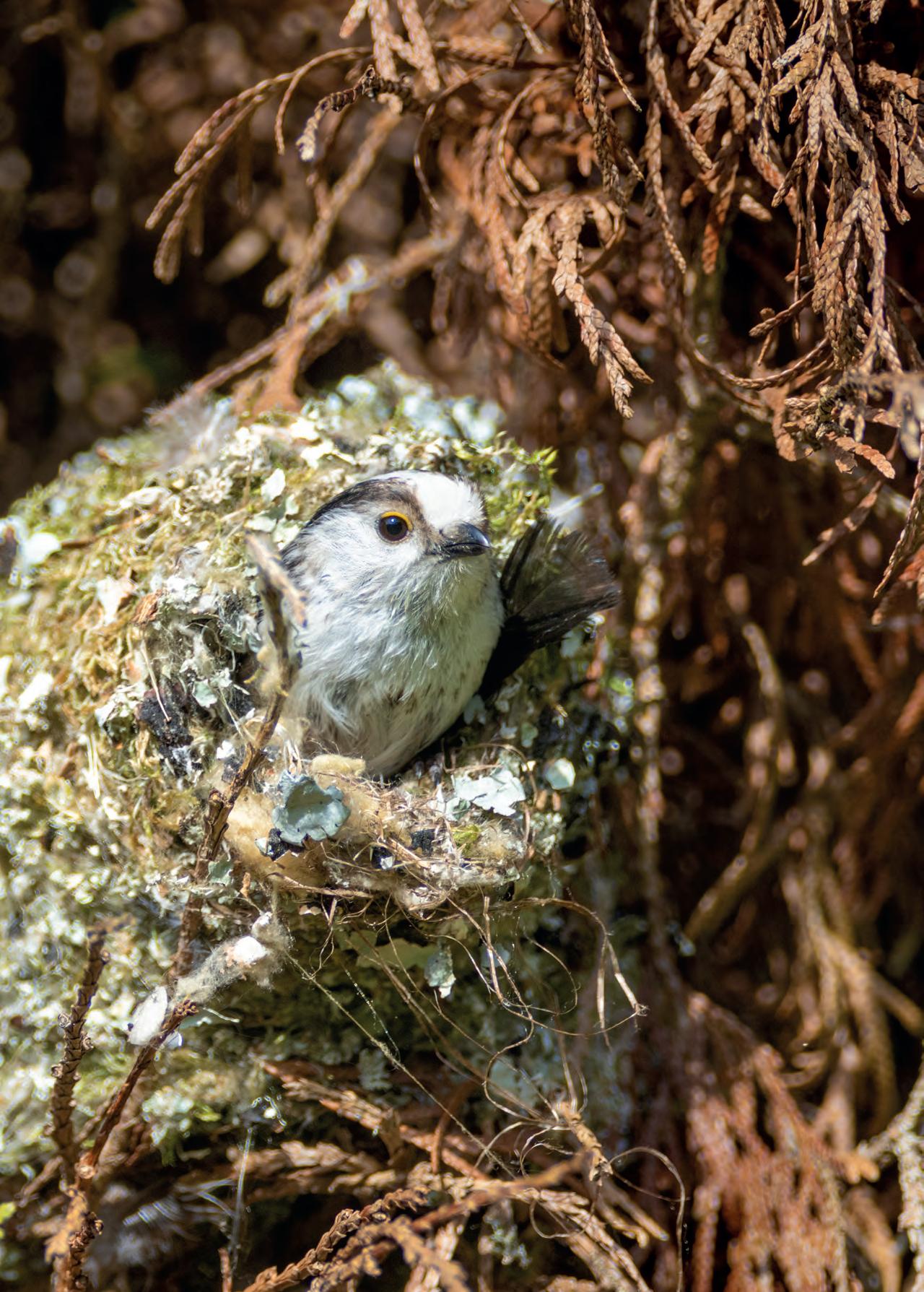
149, Spring 2023
The member magazine for Birmingham and Black Country Wildlife Trust Issue
Welcome Latest threats to nature
From plans to use banned bee-killing pesticides, inaccurate reports from HS2 Ltd on Biodiversity Net Gain and Bills that threaten laws that protect the environment, our natural environment continues to face a barrage of threats. But our combined voices are a powerful tool for action; as one of thousands of passionate wildlife defenders across Birmingham and the Black Country, you play an important role in standing up for the future of our wild spaces. Read on for updates on the outcome of the neonictinoids debate, the latest on the ‘bulldozer bill’ and how you can take action on our latest campaign.
No to neonictinoids… again
In January, for the third year in a row, against the advice of its own advisors, the UK Government approved the use of neonictinoids for use on sugar beet in 2023. This pesticide was banned for outdoor agricultural use in the UK and the EU in 2018 due its devastating impacts; a single teaspoon of neonicotinoid is enough to deliver a lethal dose to 1.25 billion bees. Over 600 Wildlife Trusts supporters around the UK took action by writing to their MPs asking them to attend a debate on 1st February to oppose this deadly decision. The outcome from the debate
was positive, with all MPs who took part asking the government to reverse their decision to give emergency authorisation for the use of neonics.
‘Bulldozer Bill’
The Retained EU Law Bill was dubbed as the ‘Bulldozer Bill’ because it could destroy laws which protect wild places and wildlife. Back in December 2022, The Wildlife Trusts joined trade unions, lawyers and other environmental groups urging ministers to withdraw this Bill, which threatens over a thousand laws that protect the environment.
Elliot Chapman-Jones, head of public affairs at The Wildlife Trusts, said “This bill is an attack on nature… it could destroy laws that protect our most precious wild places and the species that depend on them…this Bill will give ministers sweeping powers to waterdown or revoke laws.”
In February, The Wildlife Trusts ran an online briefing session alongside the TUC, academics and the Hansard Society which resulted in peers expressing their unhappiness with the Bill at the first House of Lords debate. Read more here: http://bit.ly/3jBxGqJ
Birmingham and Black Country Wildlife Trust
Wildlife is the membership magazine for Birmingham and Black Country Wildlife Trust
Email comms@bbcwildlife.org.uk
Telephone 0121 523 0094
Address Centre of the Earth, 42 Norman Street, Birmingham, B18 7EP
Registered charity number 513615
Website bbcwildlife.org.uk
Facebook.com/WTBBC
Twitter.com/WTBBC
Youtube.com/BBCWildlifeTrust
Instagram.com/bbcwildlifetrust
Fundamental flaws in HS2 calculations
On 8th February, following the release of a new evidence report, the Wildlife Trusts signed open letter to Secretary of State for Transport, Rt Hon Mark Harper, and Secretary of State for the Environment, Rt Hon Thérèse Coffey MP, urging them to address the biodiversity loss calculation errors by HS2 Ltd and asking for an immediate pause on construction.
The report revealed fundamental flaws in the way HS2 Ltd has assessed the value of nature along the construction path of HS2. For example, Phase 1, which covers 140 miles of track between London and the West Midlands, will cause at least 7.9 times more nature loss than accounted for by HS2 Ltd. Find out more about this report and how you can take action on page 6.
Despite the threats faced by our natural environment, our work continues to reverse nature’s decline across Birmingham and the Black Country. In this issue of Wildlife, you can read about the achievements of our Natural Rivers and Green Corridors project, our plans for City Nature Challenge 2023, our new project to engage young people and how to help nesting birds this spring.
Stay up to date with all the latest news by following us on social media and contact membership@bbcwildlife.org.uk to update your communication preferences.
Emma Thompson Head of Fundraising and Communication
Editor Emma Thompson
Additional contributions by: Aisha Mahmood, Alison Wilkes, Andy Slater, David Green and Simon Atkinson.
Wherever you are in the UK, your Wildlife Trust is standing up for wildlife and wild places in your area and bringing people closer to nature.
This Magazine is printed on FSC material and is fully recyclable.
1 Wild life | Spring 2023
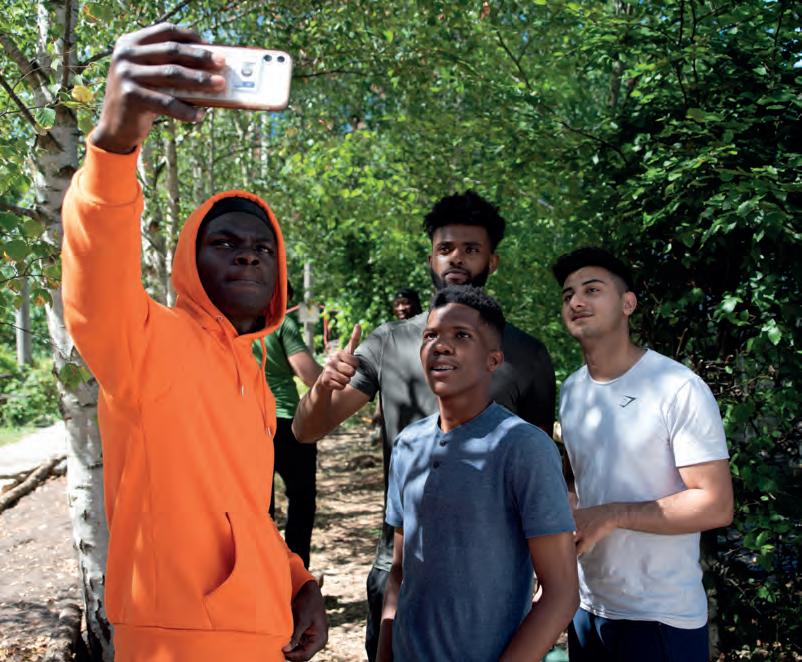
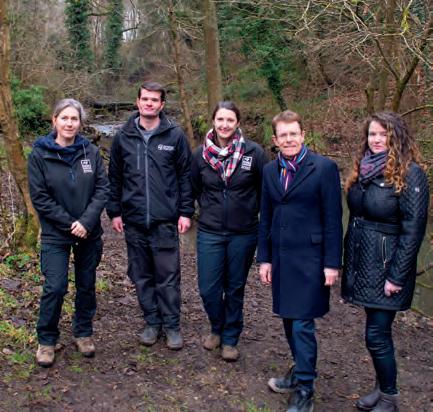
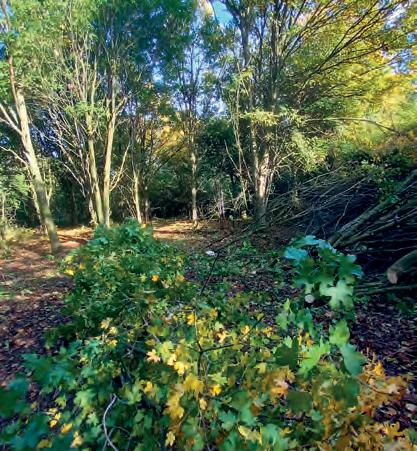
2 Wild life | Spring 2023 Contents 3 Nesting Birds What to spot this spring 5 Wild News The latest news and updates on our work 7 Wild Work How businesses are supporting our work 9 Natural Rivers and Green Corridors Over 4 years of achievements 11 Youth Action for Nature An introduction to this new project 13 Site Spotlight Sedgley Beacon 14 Staff Spotlight Introducing Ina Dos Anjos 15 The plants that shaped us An article by Simon Barnes 16 UK News Highlights from around the Wildlife Trust movement 17 Wildlife Gardening on a Budget An article from Kate Bradbury 19 My Wild Life Aaron Bhambra tells us about his love for insects 21 Members Page Updates and dates for the diary 11 9 5 3 ways to help Shop Visit our online shop for wildlifethemed gifts from t-shirts, ID guides, books and more! bbcwildlife.org.uk/shop Upgrade If a few extra pounds on your membership is feasible, please consider upgrading to help us do more for nature. membership@bbcwildlife.org.uk A gift in your Will Use our free will-writing service via Guardian Angel to leave a gift for nature's recovery for the future. bbcwildlife.org.uk/giftsinwills
What to Spot: Nesting Strategies
BY ANDY SLATER, Senior Biodiversity Information Officer, EcoRecord

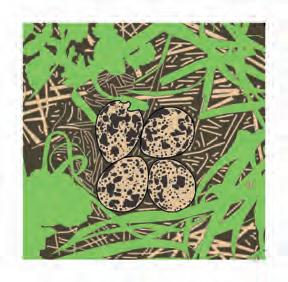
In the UK the main breeding period for birds begins in March and lasts through to August, making spring a great time to observe birds constructing or carrying food to their nests.
Most bird species build nests in which to lay eggs and raise offspring and each bird instinctively builds a nest that is unique to their species, guided by a number of factors including their size, the availability of suitable habitat and the availability of nesting material. Nest design is also adapted in order to minimise risk of predation, minimise the detrimental effects of parasites and protect against the environment.
In response to these factors, there are six broad strategies used by UK birds for situating or constructing their nests. These are detailed to the right:
Burrow
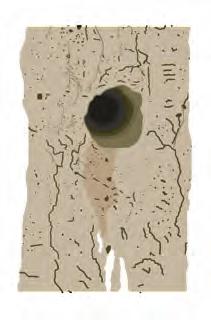
Cup
This is probably the shape that most people picture when they think of a birds nest. A cup nest is a hemispherical nest, with a deep depression for the eggs to be housed in. They are constructed using mainly thin twigs, but sometimes also grasses, moss and mud. Cup nests are built by many of the songbirds including thrushes, finches and crows.
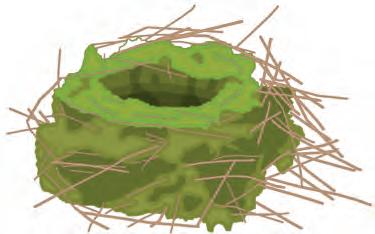
Dunnock (Prunella modularis) build nests low to the ground in hedgerows and shrubs, and commonly nest in gardens. They start to build their nests in March and will nest until July, and normally raise three broods during this time. They construct their nests using moss and twigs and line them with soft moss and hair.
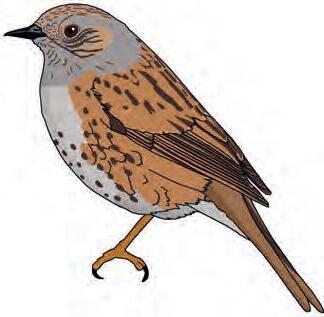
Some species dig burrows into the ground, riverbanks or cliffs. UK species that nest in burrows include puffins, sand martins, shelducks and kingfishers. Kingfisher (Alcedo atthis) excavate a nest burrow into stone-free sandy soil in low stream banks, usually about 50cm from the top. They normally choose vertical banks, clear of vegetation, as this gives more protection from predators. The nest tunnel is usually dug 60-90cm long, and the tunnel diameter is only slightly wider than the bird. The nest chamber is not lined with material, but it does have a small depression to stop the eggs from rolling out. The first clutch of eggs are laid in late March or early April.
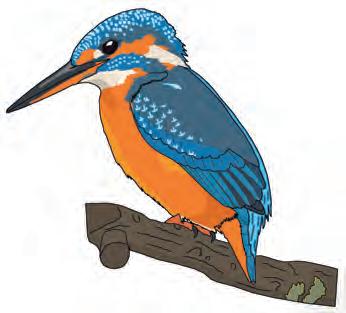
Scrape
A scrape is a shallow depression on the ground without much nesting material, though it may have a light lining of down, grass, pebbles, weeds, or other debris. This is a common nest type of many wader species, as well as pheasants, quails and bustards.
Northern Lapwing (Vanellus vanellus) nest in a scrape in the ground lined with plant material. The site of the nest is important as the bird needs a good allround view in order to spot predators, so they tend to nest either on bare ground, or on short vegetation – often in arable fields or roughly-grazed pasture.

3 Wild life | Spring 2023
Sphere
Sphere nests are created by a few UK species and are completely enclosed apart from a small entrance opening to one side, giving protection from the rain.
Long-tailed Tit (Aegithalos caudatus) spend up to three weeks constructing an intricate spherical nest in a bush or in the fork of a tree. Due to the time it takes to construct, nest-building starts relatively early in the year, in February, and both parents help with this.
They begin by building a cup and then construct a dome made of moss, which is then stuck together with cobwebs, making it elastic (which comes in handy as the chicks get bigger and the nest becomes more crowded!). They camouflage the nest by collecting lichen and sticking it to the outside. The nest is then lined with feathers for warmth.
Platform
A platform nest is a large, bulky structure often built of larger twigs or sticks. The surface of a platform nest is quite flat, perhaps with a very shallow depression. The nest may be elevated, or on the ground depending on the species. Platform nests are often constructed by birds of prey, but also by other birds such as herons, cormorants, and grebes.
Great Crested Grebe (Podiceps cristatus) build a nest directly on top of the water. These floating nests are constructed from aquatic vegetation, bulrushes, reeds and mud. The nest takes about a week to construct. As the nests are easily flooded and often break apart, the job of repairing them is almost constant.

When incubating its eggs, the bird will slip off the nest if it spots a distant predator, covering the eggs with waterweed to camouflage them.
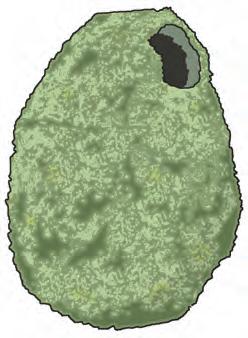

Cavity
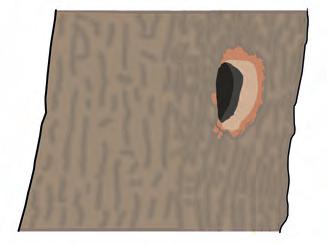
While some birds, such as woodpeckers, excavate their own holes, a less labourintensive way to make a nest is to use a hole that already exists. Many bird species, such as owls, take advantage of natural holes in trees, while others, such as house sparrows, have learnt to take advantage of holes in roofs to make their nests.
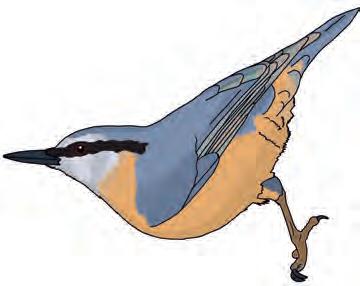
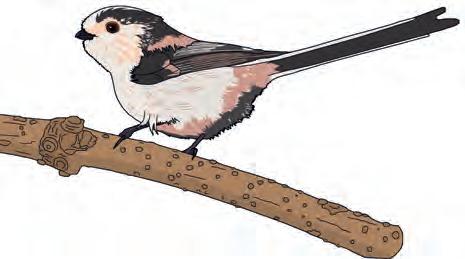
Nuthatch (Sitta europaea) normally nests in tree cavities, often occupying old woodpecker holes but may also sometimes use nest boxes. If the existing hole is too big, then they will make the hole smaller using mud and dead leaves as protection from predators. The female bird lines the nest using bark chips and dead leaves.
Action you can take to help nesting birds
1 Provide nest material. Leave out natural fibres and pieces of plant material, such as moss raked from the lawn, straw or grasses, for birds to collect. You could place them in a hanging basket or nearby bush to make it easier for the birds to collect. For some birds, such as blackbirds, its important to have a supply of mud, so having a pond, or small wet muddy patch in your garden is ideal. While birds will make use of pet hair to line their nests, it is generally advised not to leave hair out for them to use, as the chemicals used in flea treatment can be harmful to them.
2 Provide habitats for them to nest in. Many species will readily use nest boxes, the most likely being blue tits or coal tits, though sparrows, nuthatches, robins, woodpeckers, and wrens, as well as other members of the tit family may also take up residence. You can also provide natural nesting habitat by planting shrubs and hedges in your garden. It’s important to avoid strimming hedges during bird nesting season!
3 Ground-nesting birds can be very vulnerable to disturbance, so its important to keep any dogs on leads during breeding season (e.g. March to July) if you are walking in areas where ground-nesting birds may be present.
4 Report your breeding bird sightings to EcoRecord. We can’t help protect what we don’t know about.
You can report your sightings using iNaturalist or iRecord, via the EcoRecord website at ecorecord.org.uk or by emailing us at enquiries@ecorecord.org.uk
4 Wild life | Spring 2023
NESTING STRATEGIES
WILD NEWS
Good news for the River Stour!
We're delighted that our Love Your River Stour project has received £100,000 of funding from the West Midlands Combined Authority Community Green Grants. We'll use it to restore and enhance habitats, tackle pollution, run community activities and volunteer days, provide 24 young people with the opportunity to train in environmental restoration, and improve access along the river from Cradley Heath to Lye!
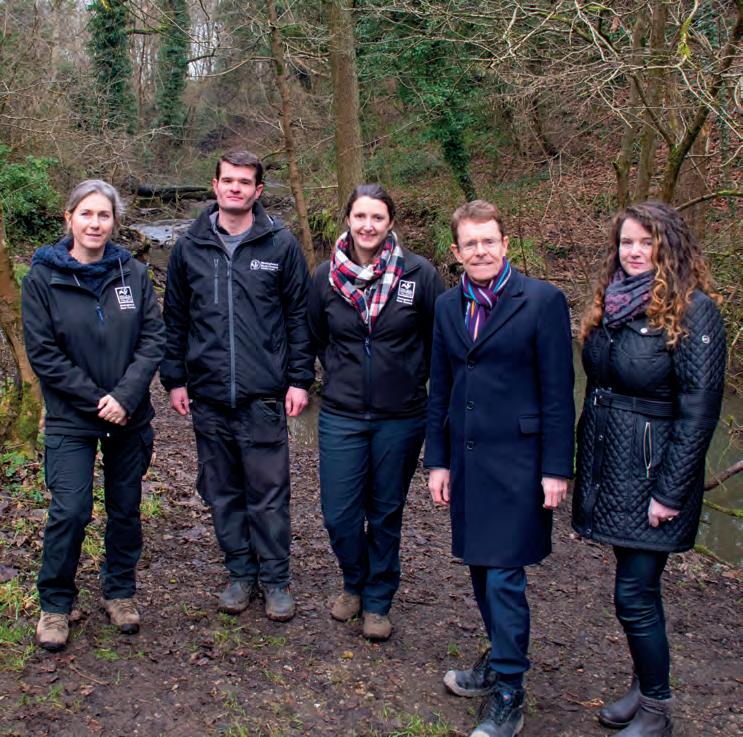
Andy Street, Mayor of the West Midlands and WMCA chair, recently visited our team on the banks of the Stour. The Mayor said: “It was a pleasure to meet the Love Your River Stour project team. They deserve huge congratulations on the work they’ve already done and I’m so pleased we’ve been able to extend a helping hand through this grant to create even more beautiful and wildlife-rich natural spaces that will be a source of tremendous pride for the local community”.
Additional funding for Natural Rivers, Green Corridors
We are delighted to announce that the Wildlife Trust and the Environment Agency have recently entered into an agreement to extend our Natural Rivers and Green Corridors project for another five years. This will continue our focus on the upper River Rea catchment in southwest Birmingham, further restoring the river and its tributaries, and enhancing the green corridors along their banks. To read more about the fantastic work the project has delivered so far see the comprehensive update on page 9 from Senior Conservation Officer Alison.
Flora of Sutton Park released
We are delighted that a brand new publication, The Flora of Sutton Park, is now available to purchase. Written by a group of local experts, with support from our EcoRecord team, it features a full atlas of the park's flowering plants, ferns and vegetation, featuring maps, a detailed bryophyte atlas and illustrated checklists of the fungi and lichens. Lavishly illustrated, this is a fascinating exploration of the park, quarter kilometre by quarter kilometre!

You can purchase a copy at bbcwildlife.org.uk/shop
See page 21 for details of the book launch event.
Register for 30 Days Wild
Could you do something wild every day for 30 days in June? Then sign up for 30 Days Wild and take part in the UK’s biggest month-long nature challenge! Register at wildlifetrusts.org/30DaysWild to receive tips and inspiration for how you can make this June your wildest yet!
5 Wild life | Spring 2023
LOVE YOUR RIVER STOUR TEAM KASIA, DAVID AND SALLY WITH ANDY STREET AND COUNCILLOR LAURA ROLLINS, SANDWELL METROPOLITAN BOROUGH COUNCIL'S CABINET MEMBER FOR LEISURE AND TOURISM
New report reveals HS2 Ltd got its nature figures wrong
A new evidence report, ‘HS2 double jeopardy: how the UK’s largest infrastructure project undervalued nature and overvalued its compensation measures’ reveals fundamental flaws in the way HS2 Ltd has assessed the value of nature along the construction path of HS2.
The report, commissioned by The Wildlife Trusts, finds that HS2 Ltd has hugely undervalued natural habitats and the wildlife that is being destroyed by the construction along the route –
while simultaneously overvaluing the impact of its nature compensation measures.
As a result of the new findings, we are calling for HS2 Ltd to re-map existing habitats along Phases 1 and 2a, and recalculate the total impacts to nature by using an up to date and proven methodology, and immediately pause all construction and enabling work. Over 43,000 people have signed our open letter to the UK Government, add your name at bbcwildlife.org.uk/hs2
Landscape Show design competition 2023
We’re delighted to announce that for the second year we will be joining forces with Warwickshire Wildlife Trust as the design competition partner for the Landscape Show at the NEC in September 2023.
This year’s design competition will have an urban focus and you can find out more about how to enter the competition in our summer magazine. Watch this space! Find out more about the show at landscapeshow.co.uk
Get ready for the City Nature Challenge
The countdown to the 2023 City Nature Challenge is on! This year we'll be joining more than 450 other cities from across the world in an epic, global mission to record as much wildlife as possible between Friday 28th April – Monday 1st May!
Will you help us show the world just how wild Birmingham and the Black Country really is? It’s easy to take part, simply download the free iNaturalist app and use it to photograph and record all of the wildlife you see across the weekend, from plants and trees to birds and bees! We’ll also be running a series of really wild events across the region for you to come and join us.
During last year’s challenge, we collectively made over 12,600 observations of a massive 1,211 different species over four days! This result meant that Birmingham and the Black Country made more wildlife observations than any other UK city area and the second most observations of any city in Europe! Find out more about how to get involved, details of our events and register for updates at bbcwildlife.org.uk/CityNatureChallenge
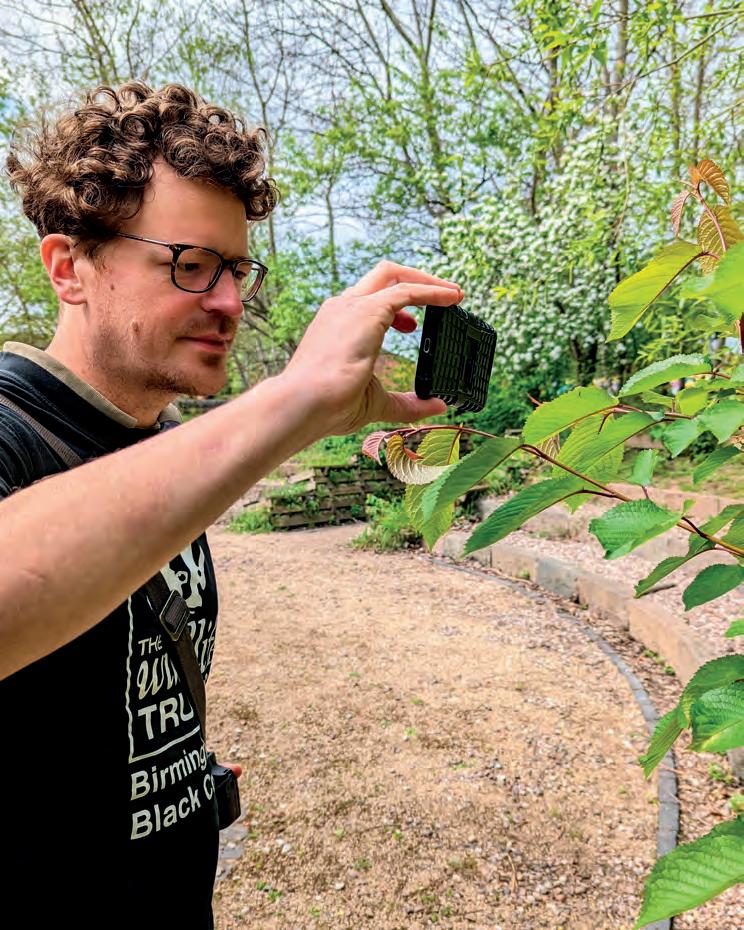
RECORDING WILDLIFE USING INATURALIST 6 Wild life | Spring 2023
WILD NEWS
Support from businesses comes in many forms, from donating a percentage of annual sales, unique employee fundraising challenges, booking employee experiences to in-kind donations. The interest in business partnerships continues to grow and we are extremely grateful to the following businesses for supporting our mission for a Wilder Birmingham and Black Country.
Business supporter updates

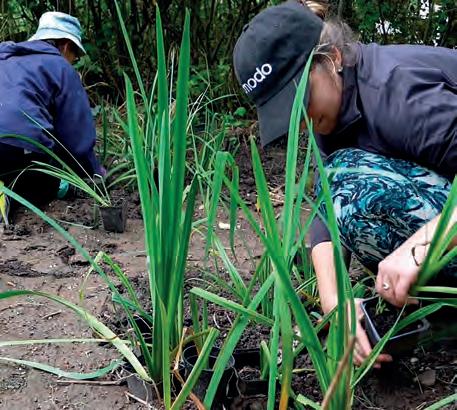
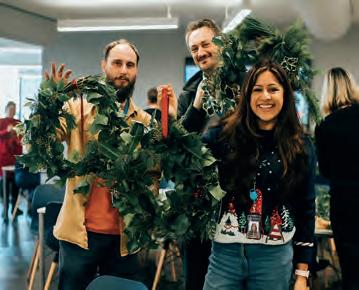 BY EMMA THOMPSON, HEAD OF FUNDRAISING AND COMMUNICATION
BY EMMA THOMPSON, HEAD OF FUNDRAISING AND COMMUNICATION
Hogan Lovells
In January 2023, we entered the fourth and final year of a fantastic partnership with this global legal firm alongside London Wildlife Trust and The Royal Society of Wildlife Trusts. Hogan Lovells have a unique culture of giving and a dedicated team who oversee Responsible Business activity at the firm, including a range of fundraising events from ballroom dancing competitions to abseiling challenges. The partnership has raised over £233,700 for the partnership so far, with over £70,000 directly for the Trust, and we’re looking forward to making the final year of this partnership the best yet!

Modo Energy
Data analytics platform Modo Energy, raised £3,216 between October 2021 and November 2022 by donating 0.5% of sales through the Work for Good platform. They joined us for a Wild Experience Day at EcoPark in September 2022 supporting with our Growing Local Flora project and became Gold Business members in February 2023 with plans to increase employee engagement and fundraising opportunities.
SCC
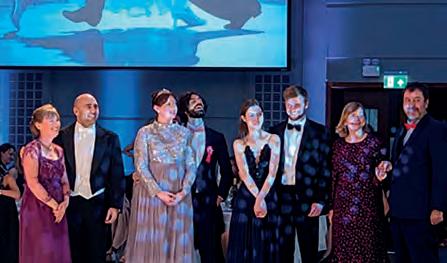
SCC is Europe’s largest privately owned IT systems integrator. Headquartered in Birmingham, they have been investing in the West Midlands since 1975. As part of their environmental, social and governance (ESG) programme, SCC provide their people with two volunteer days each year. SCC supported us as bronze business members in 2022 and also joined us at EcoPark in July for a Wild Experience Day collecting litter from the River Cole and again in December for a festive wreath-making workshop.
Assystem Transport & Infrastructure
Infrastructure consultancy with experience in the infrastructure, rail, transport, highways, property & utilities markets, Assystem Transport & Infrastructure (formerly Schofield Lothian), have been Silver Business Member since September 2020. In September 2022, 25 colleagues joined us for a Wild Experience Day supporting with meadow and pond management at our Deer’s Leap Wood Nature Reserve.

7 Wild life | Spring 2023
Birmingham County Football Association

In September 2022, Birmingham County Football Association chose the Trust as their Charity of the Year pledging to support with unique fundraising opportunities. To mark Green Football Weekend (3-5 February 2023) they donated £1.50 for every goal scored across 10 local grassroots football leagues, which totalled £2,500 to help support regional nature conservation projects.
Wienerberger
Bronze business member since July 2019, Wienerberger are the UK’s leading provider of wall, roof and landscaping innovations offering one of the broadest product portfolios in the construction business.

Donations
• Vinoteca generously donated exclusive hire of their fabulous new wine bar and restaurant in Birmingham City for a special event
• Birmingham County FA donated tickets to a Birmingham City FC match for our Youth Action for Nature survey prize draw
• The Good Intent donated venue hire for our fundraising quiz night
• experiencedays.co.uk donated a voucher worth £50 for an event prize
Fleming Verandas

Wolverhampton based veranda and outdoor living spaces experts, Fleming Verandas have donated 1% of sales for a second year running and have pledged a third year of support via the Work for Good Platform.
Kennedys Law
Birmingham based law firm Kennedys joined as bronze business members in February 2022 and colleagues joined us for a Lunch and Learn session in Birmingham City Centre in September with a guided litter-picking walk.
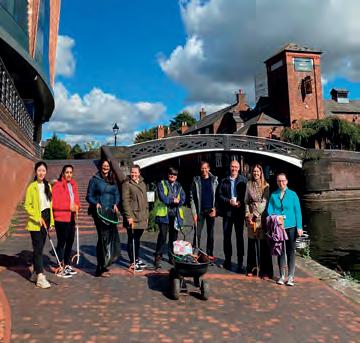
Wild Experience Days
The following businesses booked Wild Experience Days with us in the last 12 months, with almost 300 employees helping us with river clear ups, tree and hedge planting, meadow management and invasive species removal;
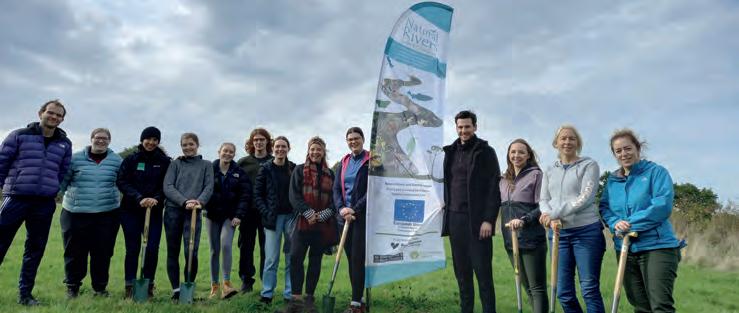
• PriceWaterHouseCooper
• L inxon
• Morgan Sindall
• COLAS
Vote for us
We’ve been shortlisted as one of four charities to be Charity of the Year for Birmingham Cocktail Weekend which takes place from 7th – 9th July 2023. Please vote for us at birminghamcocktailweekend.co.uk/ journal/charity-of-the-year before 19th March 2023.

• AECOM
• River Mounts
• Goldman Sachs
• Modo Energy
• Defra
• Schofield Lothian
• Coca-Cola
• AX A
• Brewin Dolphin
• Birmingham County FA
• XPS Group
• Wealthwide
Get involved
9 out of 10
SMEs say that supporting good causes is important for their business
Source: Generosity of Business Report, Work for Good 2022
To find out more visit bbcwildlife.org.uk/our-partners or email fundraising@bbcwildlife.org.uk
8 Wild life | Spring 2023
MY WILD WORK
Natural Rivers and Green Corridors (NRGC)
Woodlands, meadows and water
BY ALISON WILKES, SENIOR CONSERVATION OFFICER
As you may remember from previous articles, one of the projects that the Conservation Department has been working on since 2018 is the Natural Rivers and Green Corridors (NRGC) project. The project is a partnership between Birmingham City Council, the Environment Agency and the Trust, part-funded by the European Regional Development Fund (ERDF). The NRGC project aims to carry out work to restore and enhance habitats and improve ecological connectivity. The project area includes corridors of public open space in the upper River Rea catchment in south-west Birmingham and along the River Tame corridor at Sandwell Valley Country Park and Hilltop/Manwoods in west Birmingham/ east Sandwell Borough. As the project comes to an end, it is the perfect time to catch up with the achievements over the past 4 and a half years.

Woodlands
The Trust’s work in the woodland habitats across the project area has been ongoing since the very start of the NRGC project. We have delivered volunteer days, including with local Friends groups, Wild Experience Days, training sessions and educational opportunities for groups such as the Inspired Choices youth group with the involvement of Natural Prospects, Love Your River Cole and Love Your River Stour trainees. Early activities included work at Woodgate Valley to plant local provenance woodland flowers like Sweet Woodruff and Wood Speedwell, grown through the Trust’s Growing Local Flora (GLF) project, into planted woodland thinned by Birmingham City Council staff, letting light into the dense woodland to allow the flowers to thrive. Our other
fantastic volunteers have supported with woodland management; thinning another area of woodland to allow the diversification of the woodland, by under planting of a variety of tree species to increase the age and species diversity of the woodland and through planting of woodland flowers, grasses and sedges to create a more natural field layer.
Over the past winter season, along with support from our Natural Prospects trainees, we have been busy completing the last of the woodland work at Woodgate Valley Country Park, Stonehouse Brook woodland, along the Bourn Brook walkway, the walkway along from Juggins Wood and in Senneleys Park. We have created glades within woodlands, scallops along the edges of the woodlands and widened paths to create butterfly rides, as well as a small amount of hazel coppicing. With the help of a number of groups on Wild Experience Days, we have planted more
woodland flora, sown woodland seeds, planted Wild Daffodils, climbing plants such as Honeysuckle and a variety of tree species to increase the diversity of the woodlands. We have focussed on species that provide flowers and fruit for invertebrates, birds and small mammals, species that are food plants for caterpillars, such as Alder Buckthorn for Brimstone butterflies, and species that increase the length of time that flowers are available across the site (i.e. early and late flowering species).
We have also enhanced a newly planted hedgerow, the creation of which was funded by Esmée Fairbairn Foundation along the line of an historic hedge, with a traditional ditch and bank by planting a variety of woodland flora, including Wild Primrose, Greater Stitchwort and Ground-Ivy.
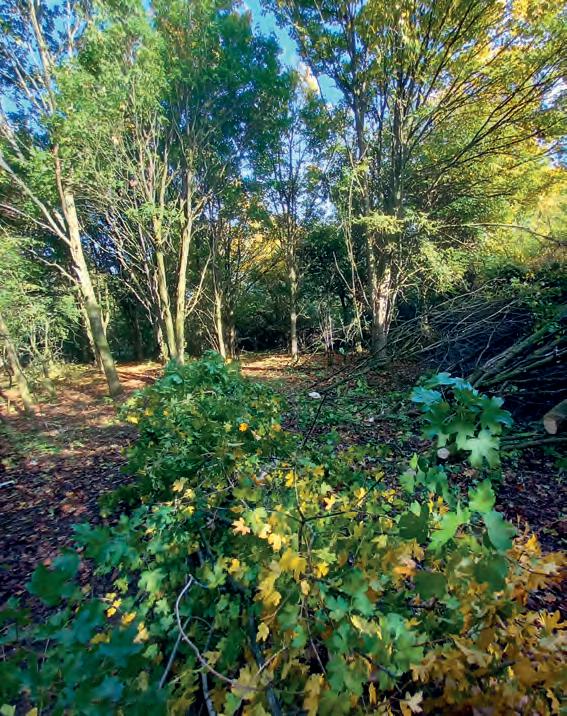
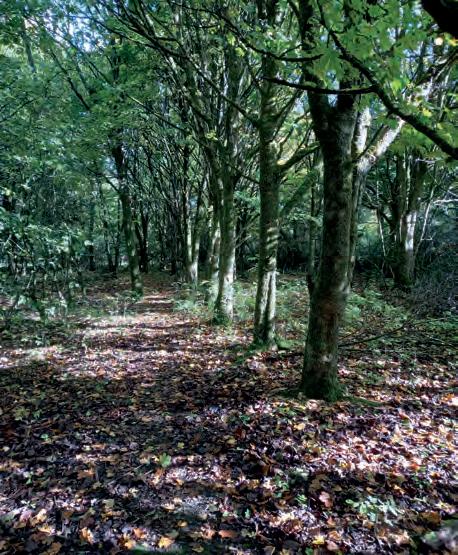
9 Wild life | Spring 2023
BEFORE AFTER
Hay Meadows and other grasslands
A second theme of this project has been creating, improving and restoring hay meadows and other grasslands, the majority of which was carried out at the linked parks and open spaces of Manor Farm Park, Meadowbrook Open Space and Ley Hill Park with the help of volunteers, Friends groups and a school group. As with the Trust’s previous meadow creation work carried out through the Nature Improvement Area (NIA) project, we used the green hay strewing technique, in partnership with experts from the University of Wolverhampton, pioneers of this method in the UK. Green hay strewing involves using freshly cut (green) hay from an existing meadow (called the source meadow), baling this hay and then spreading it across the sites where new meadows are being created or existing sites are being diversified. The method works because the seeds held in the flowers of the source meadow are carried to the new meadows and then fall onto the ground to germinate and grow at the new sites. The source meadow in this case was the meadows at Castle Vale – meadows the Trust created through the NIA project ( bbcwildlife.org.uk/ nia-castle-vale-meadows). The Conservation team have also carried out grasslandrelated work at Woodgate Valley. With the help of staff from DEFRA on a Wild Experience Day, we cleared saplings invading a grassland, restoring this threatened habitat type to its former condition. The grassland supports a population of Southern Marsh Orchids, which would have been shaded out by the trees, had they not been removed. Other work at Woodgate Valley included the introduction of Devil’s Bit Scabious plants into some of the grasslands – plants which had been grown from seed collected from the nearby Senneleys Park and grown on through our GLF project, to then be ‘returned to the wild’ not far from the parent plants.
Water
As mentioned in previous articles, one of the larger elements of the NRGC project is the removal of weirs along the Bourn Brook. These were mostly completed at the start of the project but we have also been carrying out other water habitatbased projects. At Woodgate Valley, a seasonal pond was created in 2019/20 and this has now been followed up with the creation of some scrapes near to the Bourn Brook, with the aim of providing habitat for dragonflies, damselflies and other aquatic invertebrates. We were also involved in bringing a hidden stream back out into the light at Senneleys Park, by de-culverting a section of brook sent underground through a section of pipe many years ago – for more details see the spotlight feature to the right.
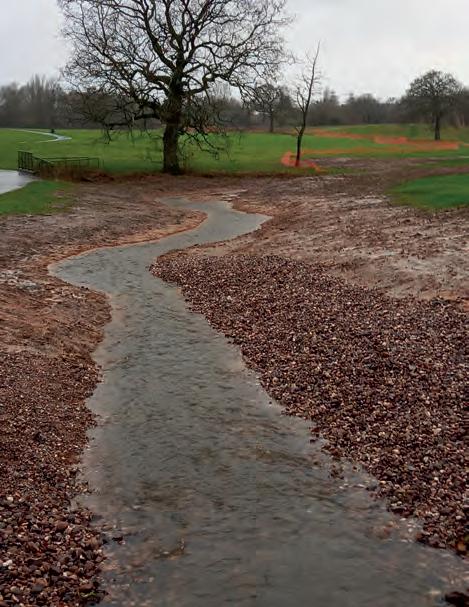
Spotlight on Senneleys Park
Senneleys Park is one of the sites that has benefited through the NRGC project. The site is an urban park, with a play area, sports facilities and mown grassland, but also has areas great for wildlife, including planted woodlands, meadow, ponds and streams. We have worked with the amazing Friends group to carry out 3.95ha of habitat improvements by:
• thinning and coppicing within the woodland plantations to enhance the structural diversity of woodland and to create opportunities for ground flora planting and development
• planting woodland flora such as Wild Primrose, Common Dog Violet, Wood Speedwell and Wood Sorrel within the thinned woodland and species such as Greater Stitchwort and GroundIvy along the path edges of the newer woodland blocks and sow seeds of woodland species such as Red Campion, Wild Teasel, Hedge Woundwort and Common Figwort
• restoring a wetland area within one of the older woodland areas by re-creating a glade and removing some vegetation from an overgrown pond
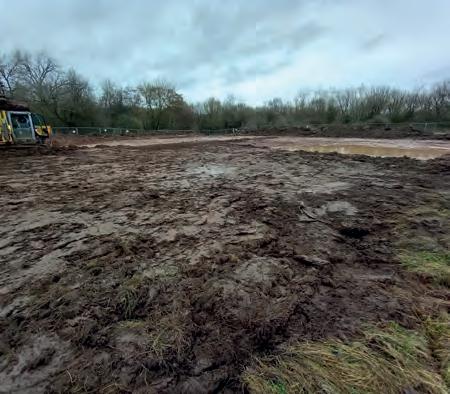
We also provided habitat management advice to the Friends group for the wider site.
By working with NRGC partners, a new section of open watercourse (around 60m in length) has been created, bringing a previously culverted section of the Stonehouse Brook back to the surface. This has created an important new habitat feature by adding a significant length of running water to the site with multiple benefits to a wide range of wildlife in the area with additional planting along the edges of the restored section of brook.
10 Wild life | Spring 2023
SCRAPES UNDER CONSTRUCTION
DECULVERTED STREAM
NATURAL RIVERS AND GREEN CORRIDORS
Introducing our Youth Action for Nature Project
BY AISHA MAHMOOD, YOUTH ACTION FOR NATURE MANAGER
At The Wildlife Trusts, we know that we need to restore nature at a global scale, on land and at sea. And it needs to happen now. Our vision is of a thriving natural world, with our wildlife and natural habitats playing a valued role in addressing the climate and ecological emergencies, and everyone inspired and to get involved in nature’s recovery. We know that if nature is to be restored at scale, we need many more people on nature’s side.
Source: Strategy 2030 | The Wildlife Trusts
Here at Birmingham and Black Country Wildlife Trust, we acknowledge that young people have always been at the forefront of changing the world we live in. But research from 2019 shows that 70% of 18-24 year-olds in the UK were experiencing “eco-anxiety” – feelings of helplessness, panic, anger and guilt1 when faced with the state of the natural world. With the prospect of such allencompassing devastation alongside pervasive social inequality, it’s easy for anyone to feel that protecting our planet is out of our reach or control, but this sense of helplessness is especially felt by youth voices that are rarely represented or included in decision making.
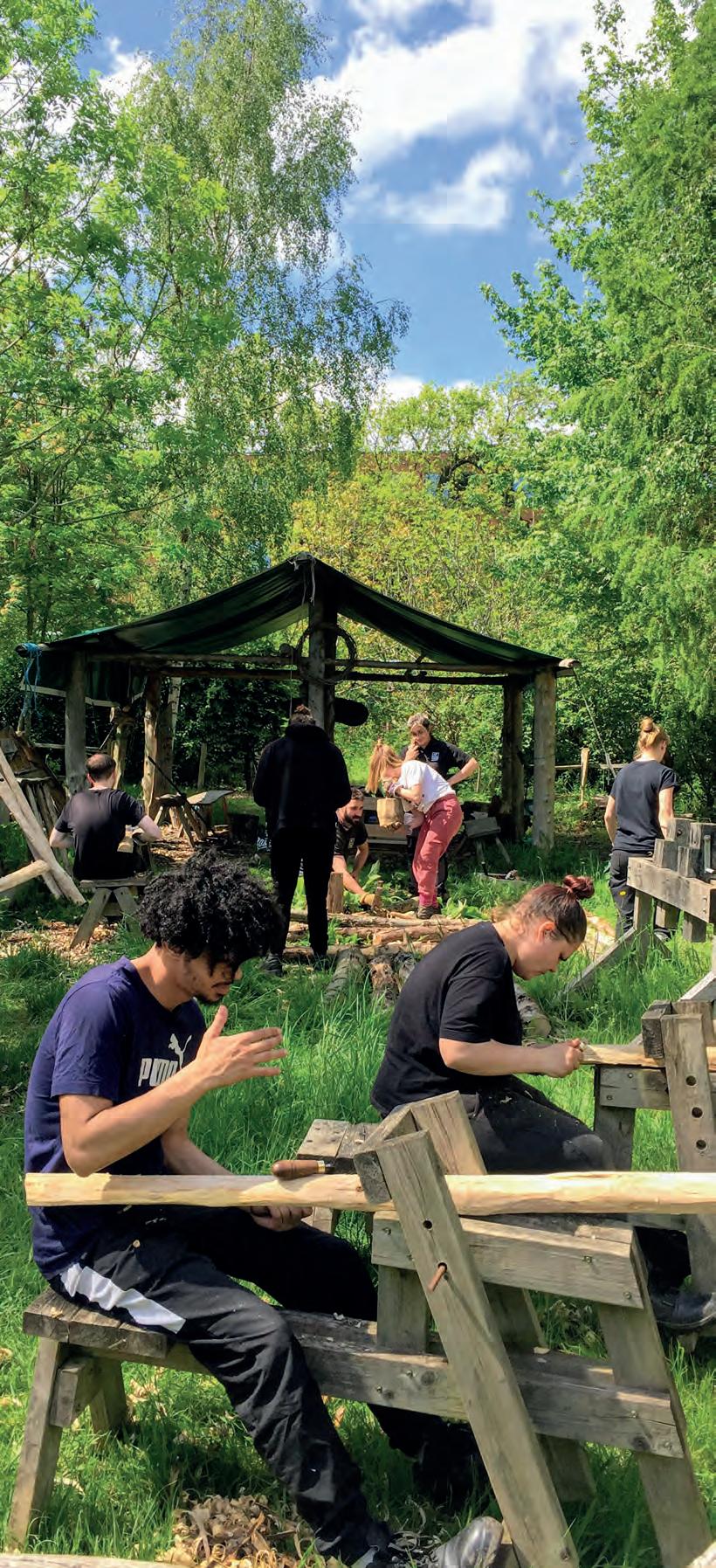
11
1 Force of Nature ‘The Rise of Eco-Anxiety’ 2021
As a young(ish) British Pakistani woman who grew up in east Birmingham, I know all too well the frustration of seeing local green spaces deteriorate, and feeling like I had no power to do anything about it. Numerous studies have shown that equitable access to green spaces is vital, not only for our health and wellbeing, but to develop meaningful connections with the natural world. And we know that it’s through these meaningful connections to nature that people are able to find the motivation to prioritise, protect, and be proactive when it’s threatened. Unfortunately, the environmental sector hasn’t always facilitated equitable access; it’s the second least diverse sector after farming in England and Wales!2
That’s where we want to help shift the narrative. I’ve been involved in community organising since my teens, and it’s in this domain that I’ve been able to come together with others to really shift things around. Whether it was creating community gardens on reclaimed bits of green in the city, or creating online spaces for marginalised communities to talk about their experiences with nature, the power has always existed in representing all of our stories as we move towards taking action. With almost half of Birmingham’s population being under 30 3, we know that working collectively towards local action in our region will make a huge impact to improving our natural spaces - whether they be where we live, work, study or relax. But our membership
survey of 2021 showed that only 3% of our current members are under 25, so we’re taking a fresh approach: we want to hold space to listen to and platform diverse youth voices, to find out what nature means to you and how we can work together to protect it. We’ll be taking as long as we need to listen to what’s important to young people in Birmingham and the Black Country, using that insight alongside our time and resources to offer support in organising and actualising ideas around how we can relate to, manage, and develop the natural spaces around us. We aim to be responsive to and reflect the insight, experiences, and expectations of a wider range of communities, and get more people taking action for nature in ways that feel relevant and important to them. We already have some really exciting things in the works but would love to hear from more of you!
Take our survey
The easiest way to let us know what nature means to you, is to take part in our online survey open to anyone aged 11-25. You can find this on our website, or by scanning the QR code with your phone camera. You can also be in with a chance to win a pair of tickets to a Birmingham City Football Club match in 2023, courtesy of our partners Birmingham County Football Association – there’s an option to enter the prize draw at the end of the survey.

Join our digital community
If you’re over 16 and would like to connect with us and other young people in the region who want to take action for nature, we’d love you to join our digital community on Slack. You can find a link to the application form on our survey or website. We’ll be carrying out lots of conversations in this space, as well as sharing details of events, opportunities and training. It’s basically the best way to keep up in touch with us regularly!
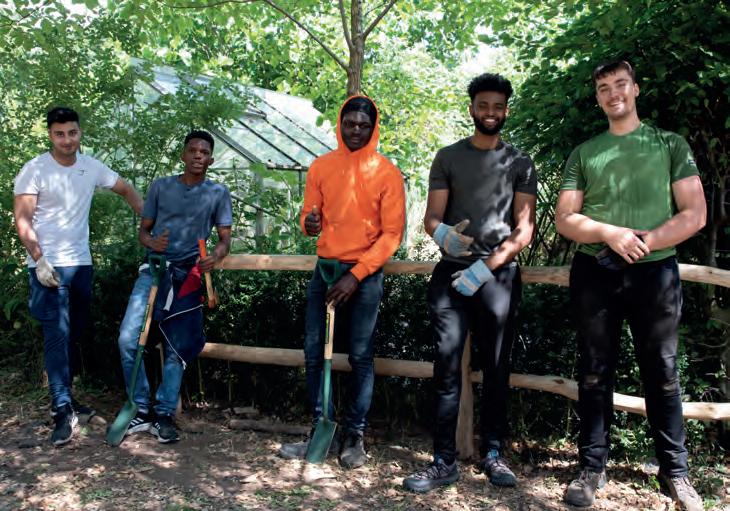
Get in touch with us

If you’re over 18 and/or work with 11-25 year olds and would like to have a chat about how you can work with us or get involved, please drop me an email at Aisha.M@bbcwildlife.org.uk
You don’t have to be involved in environmental or conservation work, we want to hear from anyone and everyone who cares about nature from whatever perspective!
Find out more about the project at bbcwildlife.org.uk/Youth-Action-Nature
Nextdoor Nature
Youth Action for Nature at Birmingham and Black Country Wildlife Trust is a Nextdoor Nature initiative. Nextdoor Nature is bringing communities together to help nature flourish where they live and work! Thanks to £5 million funding from The National Lottery Heritage Fund, Nextdoor Nature will provide people with the advice and support they need to help nature on their doorstep, and leave a lasting natural legacy marking The Queen’s Platinum Jubilee.
12 Wild life | Spring 2023 2 Labour Force Survey of 2015 [Norrie, 2017] 3 Department for Communities and Local Government
YOUTH ACTION FOR NATURE PROJECT
Site Spotlight
Sedgley Beacon
BY SIMON ATKINSON, HEAD OF CONSERVATION
The site is both a local landmark and a special place for wildlife, with birds spotted on transit in recent years including skylark, siskin, raven and peregrine falcon. One of the most valuable but least known features of Sedgley Beacon is the old quarry; a Black Country Global Geopark site designated for its exposures of fossiliferous limestone dating to the Silurian period some 420 million years ago. Since being abandoned in the early 20th century, the quarry has been colonised by speciesrich limestone grassland which supports rare and specialised wildflowers, and an associated diverse range of invertebrates including a population of the regionally rare marbled-white butterfly. The quarry provides the last refuge for this habitat that would have formerly been abundant across the whole of Sedgley Beacon.

Since 2022 The Wildlife Trust have been delivering a habitat enhancement and access improvement project at Sedgley Beacon in partnership with Dudley Council and local landscape contractor Sandyfields. The first phase of the works were completed last autumn and included the construction of new entrances, paths and fencing to create an entirely new access point and 10,000m2 of new public open space. Over the winter we’ve delivered the second phase of the project which has focused on diversifying and increasing the area of many of the site’s habitats.
Much of Sedgley Beacon is dominated by grassland that has lost its former floral diversity through changes to management over many years, significantly reducing its value to pollinating insects and the wildlife that relies upon them. To help to restore these areas the grasslands have been cut and the hay removed, followed by
some seeding and planting of species including yellow-rattle, a well-known semi-parasitic plant which helps to reduce the dominance of certain grasses and provides the opportunity for other wildflowers to thrive. Elsewhere we’ve undertaken work to prepare areas for the creation of new flower-rich limestone grassland. Here the top layer of soil has been scraped back to expose a lime-rich layer which we’ve seeded with species including greater knapweed, kidney vetch and milkwort that have been collected by hand from the quarry. It’s hoped that in the coming years this special and rare habitat will return to these areas.
Some of the existing limestone grassland has declined over recent years through scrub encroachment and some of this has been cleared, along with further scrub from the steep north-facing
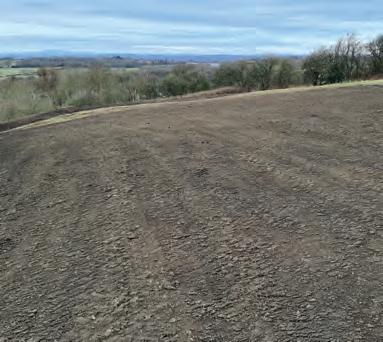


13 Wild life | Spring 2023
Situated on the edge of the Black Country, Sedgley Beacon is a limestone hill from the top of which are panoramic views of the Black Country, Birmingham and the Shropshire Hills.
FLOWER-RICH LIMESTONE GRASSLAND IN THE OLD QUARRY
NEW ENTRANCE AND PATHWAY PROVIDING ACCESS FROM THE WOLVERHAMPTON ROAD
AREA PREPARED FOR LIMESTONE GRASSLAND SEEDING
quarry face where some of the site’s most valuable geology had become obscured.
In the late 20th century a number of woodland blocks were planted on the slopes of the site. These hadn’t received any management since the trees went in the ground and had become dark, crowded and relatively wildlife-poor. Just like the work at Woodgate Valley described in the article on page 10, the plantations have been thinned to let more light reach the woodland floor, different species of tree and shrub added, and a diverse range of woodland plants produced by our Growing Local Flora project planted.
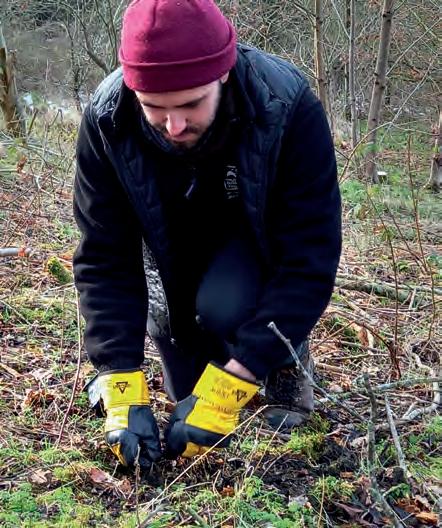
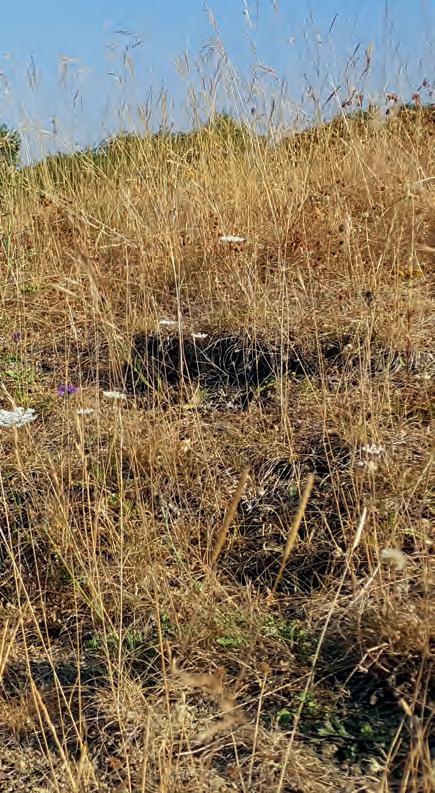
Elsewhere, historic hedgerows that had become gappy and outgrown have been ‘gapped-up’ with shrubs and trees of species that will provide nectar, pollen and fruits for a range of wildlife, whilst two entirely new hedgerows have been planted on banks created from the scraped back soil. Finally, historic trackways and public footpaths have been opened up through the removal of vegetation that had prevented access along these for many years.
Staff Spotlight
Janaina (Ina)
Ellison Dos Anjos Biodiversity and Data Evidence Officer
Hi, I’m Ina, I joined EcoRecord as Biodiversity and Data Evidence Officer in November 2022. I applied for the post just before completing my MSc at Cardiff University and was incredibly grateful to secure a role as soon as I finished! I am originally from Gloucester, however I completed my undergraduate degree of Animal Behaviour and Wildlife Conservation at Wolverhampton University back in 2018, and then worked as a laboratory technician at a college (where I missed working with wildlife very much!) and decided to do my Masters in Global Ecology and Conservation.

Before my Masters degree I knew I loved studying wildlife, but it wasn’t until then that I realised how much I enjoy working with data, and how valuable it is. I spent
my entire year at Cardiff analysing large datasets, and found this work incredibly rewarding. This was why when I saw this job role I knew it would be the perfect job for me!
The EcoRecord team have been incredibly welcoming, and the work is vital in monitoring the incredibly diverse wildlife around Birmingham and the Black Country. So far, I have been working on a large dataset from the West Midlands Bird Club, and re-formatting it so it can be included in our records. I have also been working through records sent to us via email, which are incredibly interesting, and have so far compiled almost 10,000 wildlife records just from emails! In spring we will be taking part in the City Nature Challenge and I encourage everyone to get involved and send us your records.
14 Wild life | Spring 2023
SPOTLIGHT
Simon Barnes
The plants that shaped us
Perhaps the most exciting thing in life is ignorance. That’s because ignorance is an open door: walk through it and learn. And the more you learn the more doors you find, waiting for you to walk through. Until very recently I was shockingly — stupidly — ignorant about plants, considering them just the soft furnishings of the wild world.
But then I realised that, roughly speaking, everything that lives on earth is either a plant or depends on plants. What have plants ever done for us? Well, there’s oxygen, water, food...
We humans are as dependent on plants as the cow in the field or the butterfly flying past her nose. Plants are the only living things that can use the energy of the sun to make food. Plants have shaped human history. So I made a list of the significant plants of human history: wheat, rose, potato, tobacco, cannabis, grass, oak... and soon I realised that there was no escape. I would have to write The History of the World in 100 Plants. So let’s look at two UK plants that made the book.
Edward Stone, an 18th century clergyman, was walking along the river while suffering from ague: probably a rotten, feverish cold. Perhaps his condition had rendered him slightly daft, for he nibbled on a piece of willow bark. He reckoned that, since both willows and fevers are associated with wet places, the one must have been put there to cure the other. And it worked: he got better and wrote a paper to the Royal Society in London.
It worked because willow bark contains salicin. In the 19th century synthetic salicin was developed, and this was adjusted, so that it caused fewer digestive problems. The medicine firm Bayer marketed it — and called it aspirin.
Our second plant is a familiar one. These days the beauty of wild places is obvious to us all, but that wasn’t always the case. In the 18th century, a well-tended garden was regarded as the ultimate form of living beauty: cultivated, civilised and tamed. Outside was just wilderness.
That changed at the beginning of the 19th century, when, and not by coincidence, the Industrial Revolution and the Romantic Movement both began. People began to appreciate the glories of untouched, unspoiled nature. The great emblem of that change was the daffodil, as celebrated in the poem by William Wordsworth:
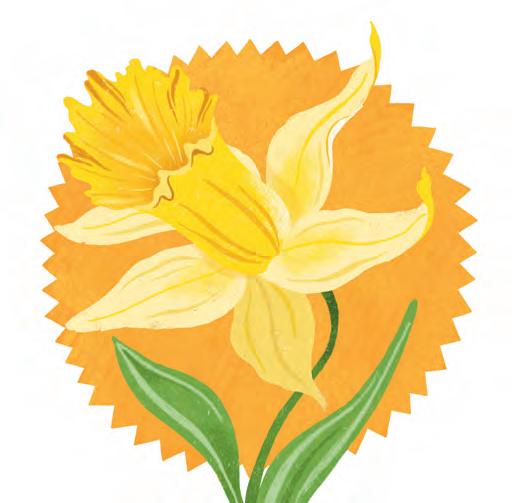
Ten thousand saw I at a glance, Tossing their heads in sprightly dance
The modern understanding of nature as something wonderful and fragile dates back to that time. Wordsworth’s daffodils made this understanding vivid for all time. But there are things to learn about almost every species of plant: the poppies that grow on ground disturbed by ploughs or by bombs, orchids that excite human passions, grape and barley that get us drunk... and on and on and on, because without plants we are nothing. We wouldn’t even exist.
THE HISTORY OF THE WORLD IN 100 PLANTS
Simon explores the stories of more of the plants that shaped us in his latest book, The History of the World in 100 Plants. As humans, we hold the planet in the palms of ours hands. But we couldn’t live for a day without plants. Our past is all about plants, our present is all tied up with plants; and without plants there is no future. From the mighty oak to algae, from cotton to coca, discover a hundred reasons why.
Wild daffodils are a beautiful spring sight. Discover some of our best nature reserves for spotting them: wildlifetrusts.org/wild-daffodils
Simon Barnes is the author of many wild volumes, including the bestselling Bad Birdwatcher trilogy, Rewild Yourself, On The Marsh, and The History of the World in 100 Animals. He is a council member of World Land Trust, trustee of Conservation South Luangwa and patron of Save the Rhino. In 2014, he was awarded the Rothschild Medal for services to conservation. He lives in Norfolk, where he manages several acres for wildlife.

WILD THOUGHTS
DAFFODIL
©
©
ILLUSTRATION
DAWN COOPER; SIMON BARNES HEADSHOT
ROBERT BECKINSALE
15 Wild life | Spring 2023
@simonbarneswild
UK HIGHLIGHTS
The Great Big Nature survey launches
To help us understand how much nature matters to you, The Wildlife Trusts are launching The Great Big Nature Survey this spring. We want to hear your views on some of the most important issues affecting nature and wildlife, and your relationship with the natural world. How often do you get out into nature? Should people try to control nature to better protect it? How important are green spaces to you? What roles should people, business, and government have in looking after nature? Should local communities be at the centre of nature conservation on their doorstep?
Whatever your views on nature, however important (or not) it is to you, make your voice heard by taking The Great Big Nature survey today. With respondents from a variety of backgrounds and with many different
experiences in and views of nature and wild places, The Great Big Nature Survey will reveal what people in the UK and islands really think about nature and how we, as a society, should protect it. Results will also help The Wildlife Trusts to hold governments to account over environmental policies and priorities. After you’ve completed the survey, why not share it with your friends and family?
Take the survey at wildlifetrusts.org/ great-big-nature-survey or scan the QR code
Ragged robin has declined due to habitat loss
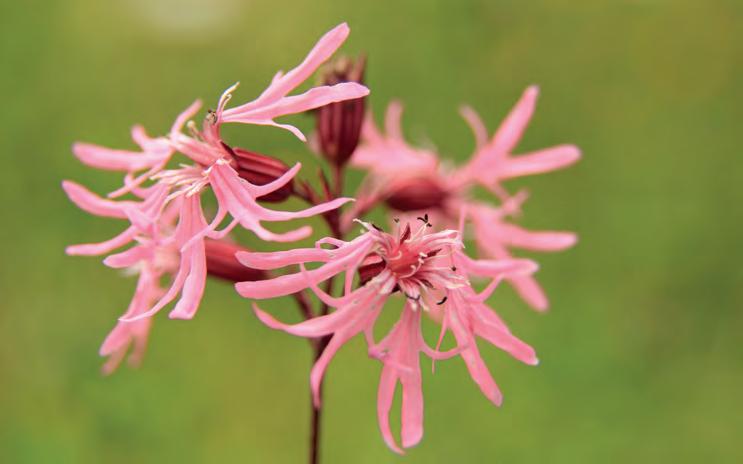
Plotted plants
The Wildlife Trusts are co-sponsoring production of the Botanical Society of Britain and Ireland (BSBI) Plant Atlas 2020, which is published this March. The Atlas is based on more than 30 million records collected by thousands of botanists between 2000 and 2019, providing

an unrivaled picture of the changing distribution and fortunes of plants in Britain and Ireland. This knowledge is likely to provide evidence to help us protect nature across the UK.
Find out more bsbi.org/atlas-2020
Hen party
The Northumberland Hen Harrier Protection Partnership, of which Northumberland Wildlife Trust is a member, announced a bumper breeding year for hen harriers in the county. Last year the partnership monitored nine nests, seven of which were successful — fledging a total of 26 chicks. This is eight more than in 2021 and brings the total since 2015 to 106 fledged birds. wtru.st/26-harriers
Give peat a chance
Derbyshire Wildlife Trust has been awarded a £100,000 Discovery Grant by Natural England to protect and restore the county’s peatlands. Peatland is a vital habitat, not just for wildlife but also for storing carbon. The grant will allow the Wildlife Trust to identify mechanisms to restore the region’s peatlands, so they can absorb and lock away carbon.
wtru.st/Derby-peat-grant
Blean
Discover how The Wildlife Trusts are helping wildlife across the UK Mr
Kent Wildlife Trust has welcomed a male bison into the herd at West Blean and Thornden Wood. The bull’s arrival was delayed by post Brexit complications, but he has now joined the three females that were released in July, and the calf born in September. The bison have 50 hectares to roam as part of the Wilder Blean Project, a joint wilding initiative. wtru.st/bison-bull
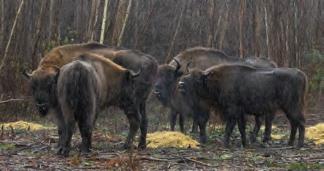
UK NEWS UK UPDATE
RAGGED
16 Wild life | Spring 2023
ROBIN © KIERON HUSTON; BISON © EVAN BOWEN
BY HANNAH BAILEY, PHOTO © SARAH CUTTLE
Wildlife Gardening on a Budget
It doesn’t cost the earth to make a wildlife friendly garden. Indeed, the less money you spend the better for your pocket, wildlife and the planet.
Rather than buying plants grown in peat-based compost and plastic pots, grow them from seed in your own compost and an upcycled container. Take cuttings and dig up and divide plants to propagate more, and if you have too many why not share them with friends and neighbours who might return the favour? It’s a good idea to save seeds rather than buy fresh every spring, but don’t forget how good birds are at farming — if you’ve ever watched a goldfinch feeding on knapweed seed you’ll know that half of it ends up on the ground to grow into next year’s larder. Look out for berrying seedlings such as holly and hawthorn at the base of fences or other spots where birds like to perch, and — with the landowner’s permission — dig them up to grow for free in your garden.
It’s not just gardening that can be done cheaply. Want a log pile? Keep an eye out for neighbours doing tree work and ask if you can have a log or two. Want a new bird box? Find instructions online to make your own. Other ways to help wildlife require no money at all: let grass grow long around the edges, avoid cutting back plants and start a nice open compost pile at the end of the garden. Nature costs nothing, we just have to let her in.
Kate Bradbury is passionate about wildlifefriendly gardening and the author of Wildlife Gardening for Everyone and Everything in association with The Wildlife Trusts. Get more tips for helping nature at home from wildlifetrusts.org/gardening
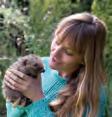
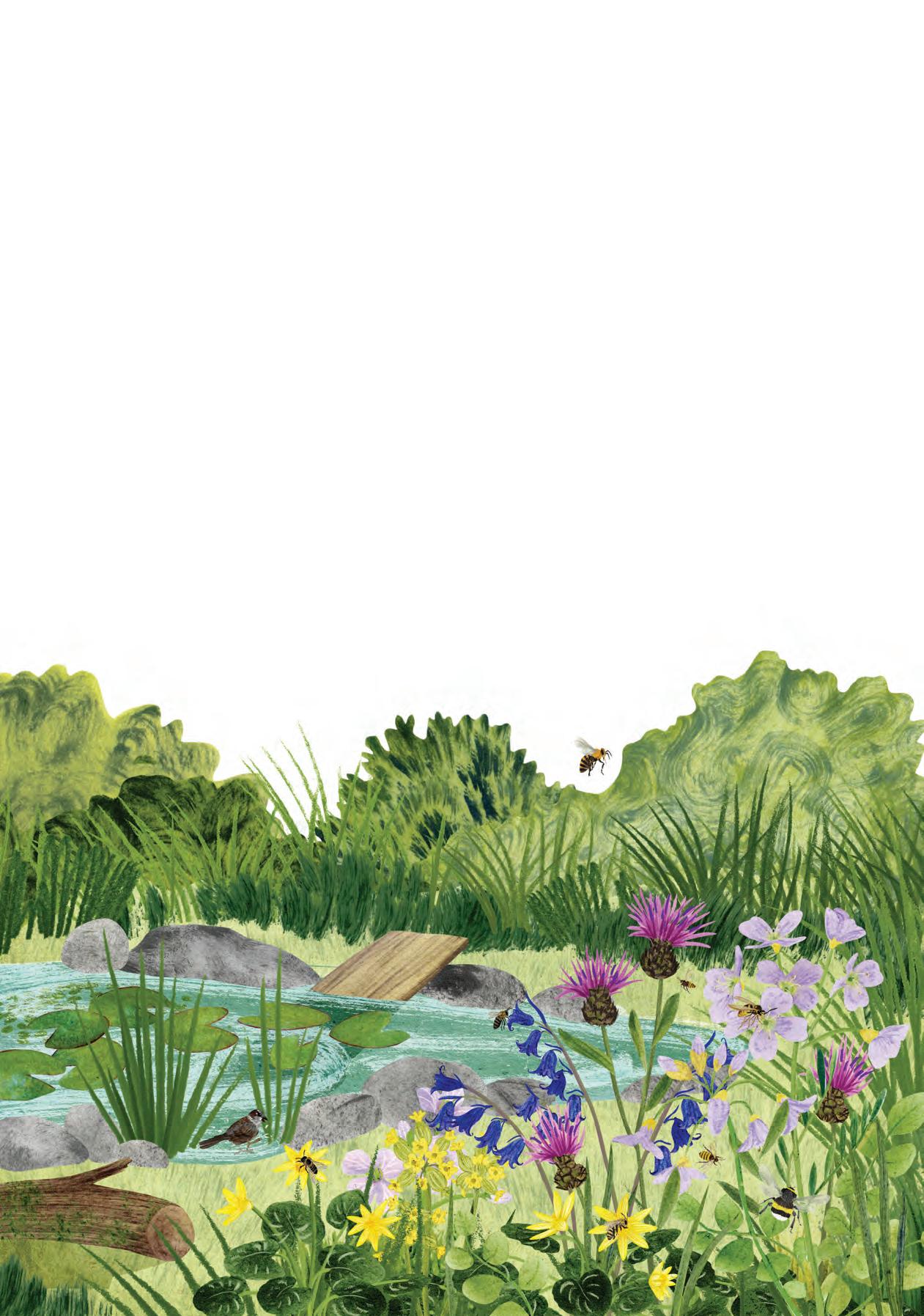
ILLUSTRATIONS
17
Grow annuals from seed
Pollinator-friendly favourites like sunflowers and cosmos are easy — simply sow in pots of peat-free compost and plant out in early summer.
Make new plants from old
Dig up herbaceous plants like nepeta and cranesbills and use an old bread knife to slice the rootball in two, with intact stems. Replant and water well.
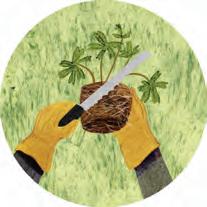
Take softwood cuttings
Cut 10cm shoots from shrubs like lavender, remove lower leaves and push into pots of moist, gritty compost. Cover with a plastic bag sealed with an elastic band and keep on a bright windowsill for eight weeks.
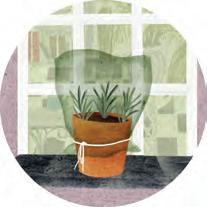

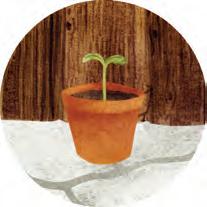
Make a log pile Neighbours pruning or cutting down a tree? Ask for some logs! Piled up in a corner or beneath a bench they provide an easy, inexpensive habitat.
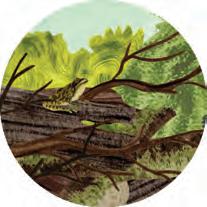
Be less tidy
Let an area of grass grow long, allow leaves to pile up in borders, deadhead and cut back less.
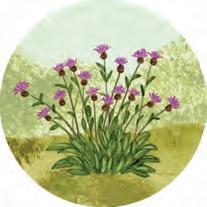

Make your own habitat boxes
From bird and bat boxes to hedgehog feeding stations and even “toad abodes”, there are plenty of instructions online on how to make your own bespoke wildlife homes.
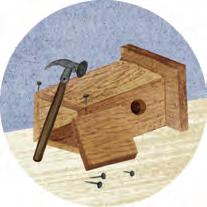
Grow your own bird food
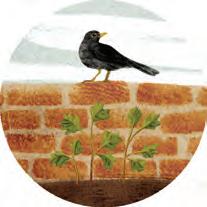
Home-grown bird food is free: avoid cutting back seedbearing plants like lavender, knapweed, grasses, sunflower and Verbena bonariensis, and watch the birds flock to feed from them.
Enjoy free gifts from birds
Birds make great farmers. Keep an eye out for holly and hawthorn seedlings, often found at the base of fences or other ‘perches’. With the landowners permission, dig them up and plant in your garden!
GARDENING FOR WILDLIFE 18 Wild life | Spring 2023
MY WILD LIFE
BY JAMES BENWELL, CONTENT AND COMMUNICATIONS OFFICER
Aaron Bhambra
Former Natural Prospects trainee, Aaron shares his experiences and his passion for entomology
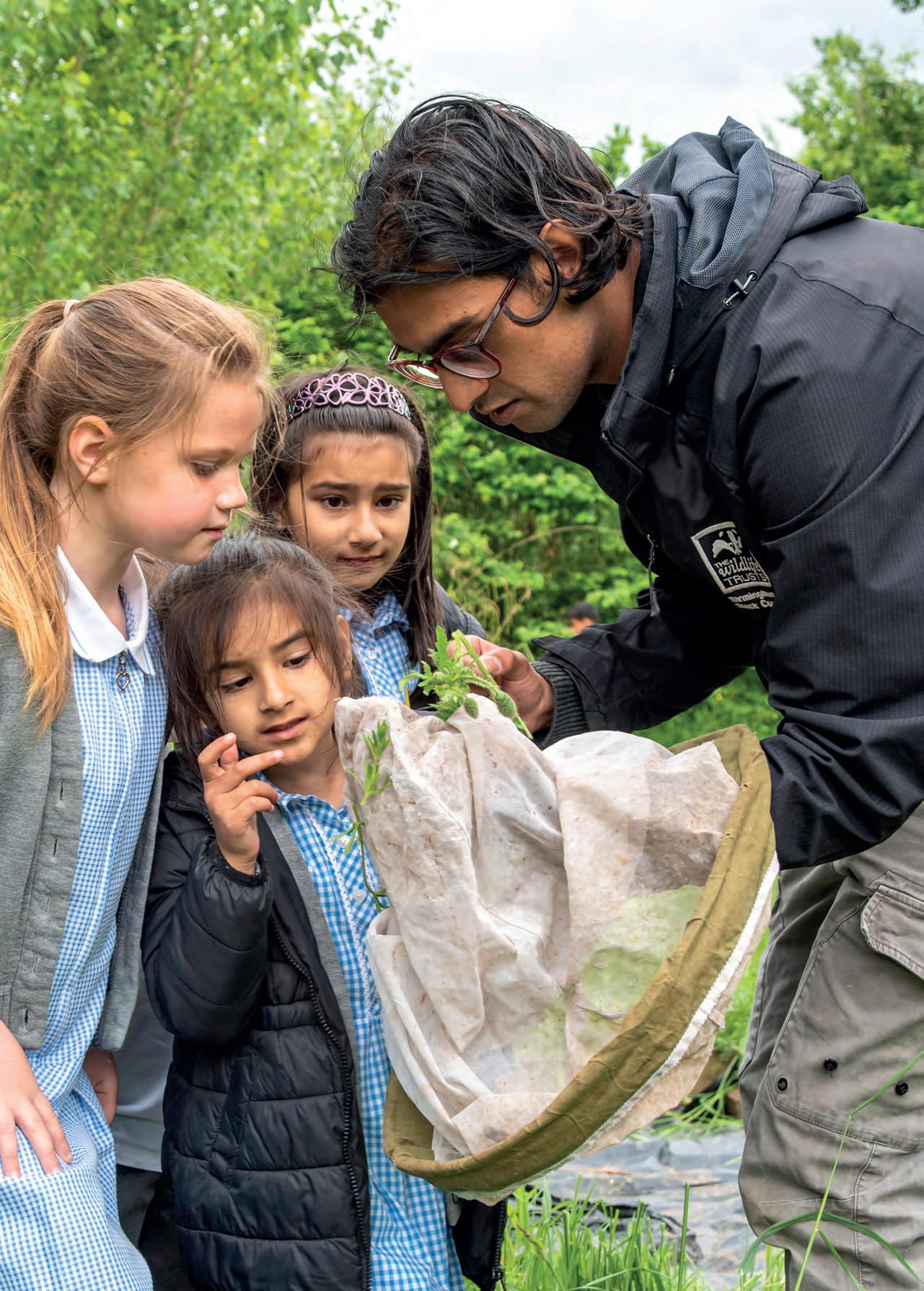
19 Wild life | Spring 2023
How did your interest in entomology begin?
My interest in entomology began a few years ago when I started volunteering for local conservation charities in my area. I was fortunate enough to meet a very passionate naturalist and entomologist who introduced me to the dazzling array of bees we have in Birmingham and the Black Country. This sparked a lifelong love of pollinators and a real fascination with the often-overlooked invertebrate species that pepper the urban world.
What advice would you give to anyone looking to follow in your footsteps?
Start small! There are a dizzying number of species of insects in the UK and many of them can be very hard to identify. Try picking one group and learn how to identify some basic morphological features associated with that group. This will familiarise you with some of the more common members of that group and help to build your confidence with a basic understanding of invertebrate biology and ecology.
How was your time as a Natural Prospect with the Trust?
My time as a trainee with the Trust was pivotal in motivating me to carry out research on pollinators in my local area and develop the skills necessary for understanding the complex interplay between habitats and the biodiversity found within them. I also made some great friends and contacts!
Have you spotted any rare species in Birmingham and the Black Country and which has been your favourite?
The rarest species I’ve found in Birmingham and the Black country was a small, solitary wasp called Gorytes laticinctus. This rare wasp found its way into Birmingham and was collected at the Trust’s HQ in Winson Green. It is still one of the only sites in the whole of the West Midlands which is home to this unusual predatory insect. My favourite record was another wasp,
this time a Noble Jewel wasp called Hedychrum nobile, which was a new colonist to the UK in 1998 and has since moved Northwards from Southern England into the West Midlands due to climate change. This year, we found this beautiful insect at Sutton Park in North Birmingham and around the Black Country in Walsall.
Can you tell us a little about your PhD research?
My PhD research is looking at how habitat fragmentation and urbanisation impacts the pollinators found in heathlands scattered around the West Midlands region. We are using drones to map habitats and collecting important data on the utility of heathlands in our area as stepping stones, enabling the migration of pollinators from southern England into the midlands and beyond!
What are your hopes for the future of wildlife in Birmingham and the Black Country?
I hope we can regenerate some of our most important sites for wildlife and recreate new areas of habitat providing nature recovery networks for a range of critical species in our area. I also hope we can inspire a new generation of naturalists to find new solutions to the growing problems facing wildlife in the urban world.

20 Wild life | Spring 2023
OUR WILDLIFE CHAMPIONS
I hope we can regenerate some of our most important sites for wildlife and recreate new areas of habitat providing nature recovery networks for a range of critical species in our area.
Members Page
BY DAVID GREEN, INDIVIDUAL GIVING MANAGER
Send us your questions, photos, stories or exciting wildlife encounters and we’ll share our favourites!
Email comms@bbcwildlife.org.uk
Flora of Sutton Park – meet the authors
On Saturday 11th March, we will be celebrating the official launch of The Flora of Sutton Park, a brand-new guide to the botanical diversity of Sutton Park. Featuring an up-to-date survey of the park’s history and archaeology, the book has been written by a team of local experts and is full of stunning illustrations and detailed accounts of its flowering plants, conifers, ferns, mosses, liverworts, lichens and fungi.

Refreshments will be provided and you will have a chance to have your copy of the book signed by the authors. This event is being held at Sutton Park Visitor Centre from 11am to 1pm. Copies of the book will be available to purchase on the day, priced £20.00.
Booking not required, just come along on the day.
Wild Quiz Night Raises Money for Wildlife!
On Monday 16 January, we hosted a Pub Quiz Night at The Good Intent pub, inside Great Western Arcade in Birmingham raising £274 for nature’s recovery.

Six teams competed on a range of wildlife-themed questions and the winning team, made up of local bat enthusiasts, The Vespers, walked away with over £70 worth of wildlife books to share.

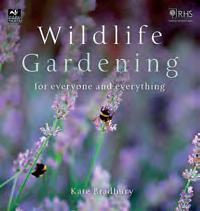
We also held a raffle on the night, with the top prize of a £50 voucher, kindly provided by Experiencedays.co.uk as part of their charity support scheme. Congratulations to the very lucky winner of both the first and second-place raffle prize, Sadie, who won a T-shirt of her choice from our Teemill store, and to Leigh, who scooped a year’s free membership.
A big thank you as well to our guest presenter and compere, Kath Stanczyzyn from BBC Radio WM (third from right) and to Dean and the team at The Good Intent for letting us use their upstairs function space free of charge. Do keep an eye on our website, or sign up for our newsletter for details of future FUNdraising events to allow us to continue working for a wilder Birmingham and Black Country!
Gifts and treats
One extra way to show your support is to purchase gifts (or a treat for yourself) from our online shop. Wear your support with our new organic clothing designs, or learn about the wildlife on your doorstep with ID guides, books and our exclusive Year in Wildlife Poster. bbcwildlife.org.uk/shop
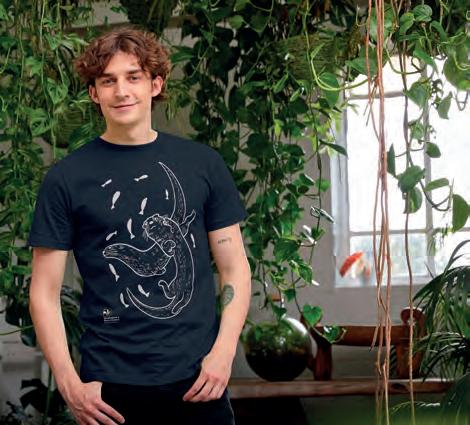
21 Wild life | Spring 2023
Fire walk - Save the Date!
Would you walk on burning coals to show your support for Birmingham and Black Country Wildlife Trust? If the answer to that is yes, then you’re in luck! On the evening of Friday 27 October, you can test your mettle by walking across burning coals and raising money to support our work. More details and ticket details will follow in the summer, but if you’re interested in being the first to buy your early-bird tickets, please register your interest by emailing fundraising@bbcwildlife.org.uk
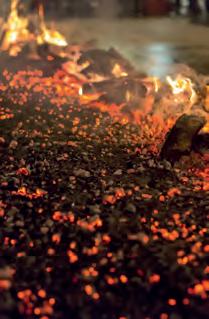
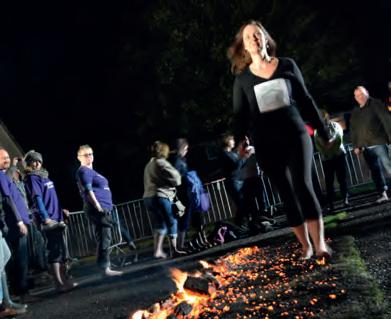
We need your help!
More members means more action for nature to help us achieve our vision for a wilder Birmingham and Black Country. Can you recommend membership to a friend, put up a membership poster at work, deliver a talk to your local community group or even join us a dedicated membership fundraiser?

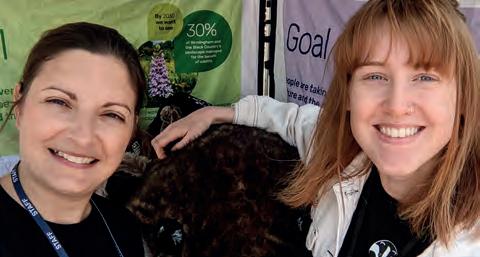
We can provide training, posters, QR codes and other fundraising tools.
Contact me for an informal chat at David.G@bbcwildlife.org.uk or call 07719 061 317
Fancy a Flutter?
15% off at Cotswold Outdoor

Quote AFWILDLIFE-M5 at the checkout, either in store or online at cotswoldoutdoor.com
The discount is offered by Cotswold Outdoor to supporters and friends of Wildlife Trusts throughout the UK. Members of Birmingham and Black Country Wildlife Trust are invited to take up the discount but it is not offered as an exclusive benefit to members of Birmingham and Black Country Wildlife Trust.
Join our Lottery today for the chance of winning £25,000 each week! The draw takes place every Friday and each entry costs £1. Each play is allocated a 6-digit lottery number. A random number generator will generate a winning number sequence and if you match 3 or more digits in the sequence. At least 50p for each £1 played comes directly to us to support our work. Winners are contacted automatically, so there’s no need to claim.
You can find out more at bbcwildlife.org.uk/lottery
The Promoter is The Wildlife Trust for Birmingham and the Black Country, licensed by Birmingham City Council under account number 3454. You must be physically located in Great Britain when buying tickets.
Donated items
A huge thanks to our member Alan who generously donated a range of items to the Trust including a gift hamper, three framed prints (a fox, jackdaw and kingfisher) and a replica world cup trophy – there was some sort of football tournament happening at the time, apparently!
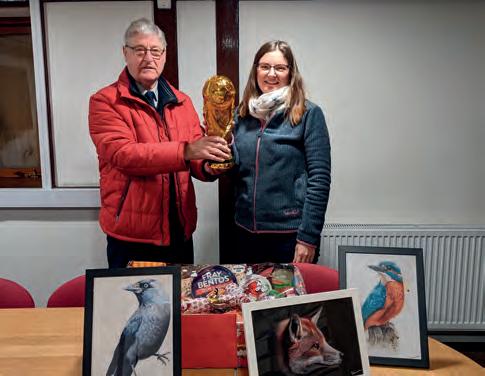
The framed prints were included as prizes at our January Quiz Night and the hamper and trophy supported our staff engagement activity just before Christmas as we celebrated a year of amazing work for nature’s recovery.
If you have items you wish to donate to support our fundraising activity please do get in touch.

22 Wild life | Spring 2023 MEMBERS PAGE
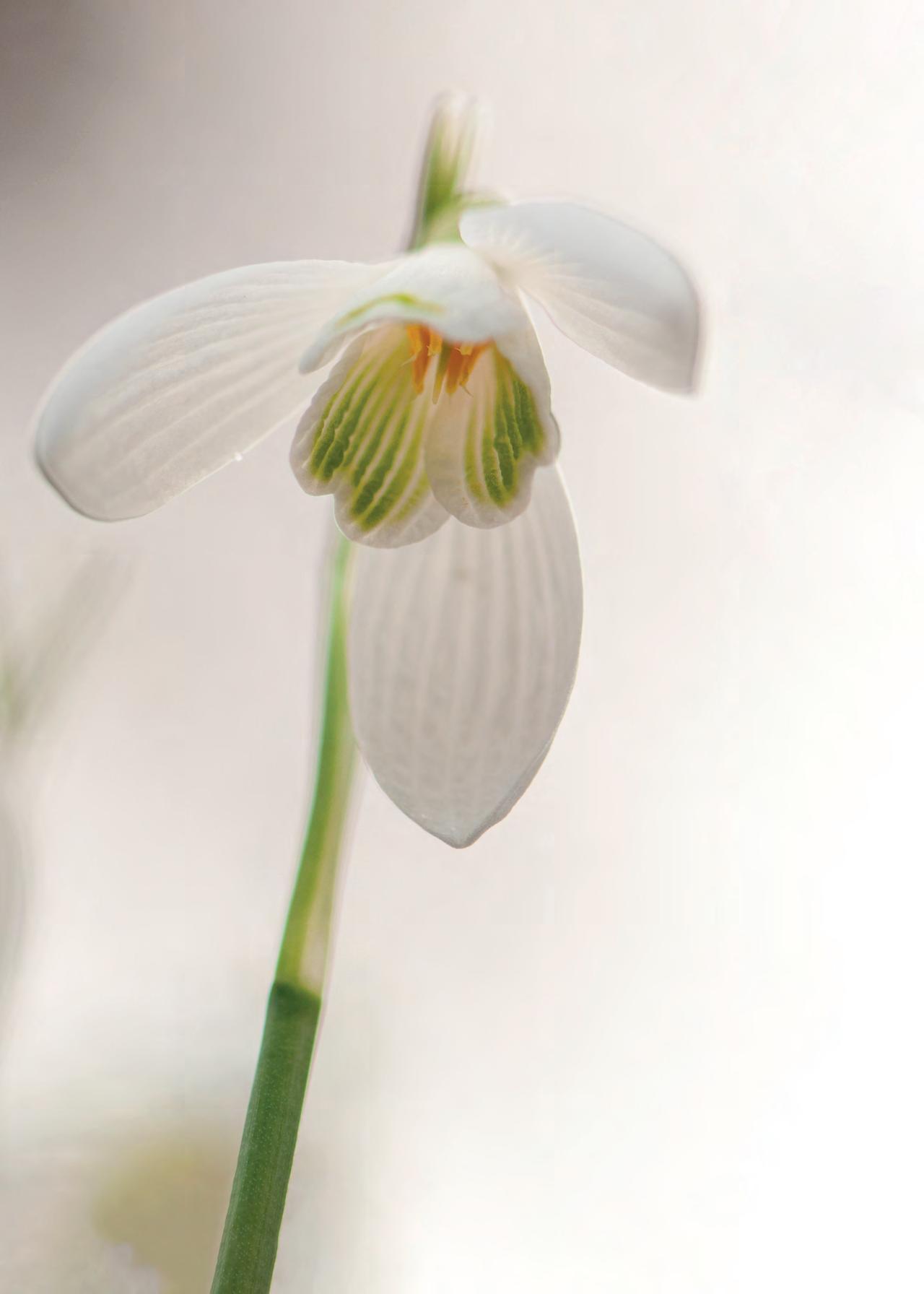
In
memory of… Saying goodbye to a loved one is never easy. But if they would have wanted donations to a charity in lieu of flowers, and you’re considering Birmingham and Black Country Wildlife Trust, we’re here to help. Contact us to discuss how to make a donation in memory that’s right for you visit. bbcwildlife.org.uk/in-memory Call David on 0121 523 0094 or email inmemory@bbcwildlife.org.uk SNOWDROPS (GALANTHUS NIVALIS) © KATRINA MARTIN / 2020VISION
loving























 BY EMMA THOMPSON, HEAD OF FUNDRAISING AND COMMUNICATION
BY EMMA THOMPSON, HEAD OF FUNDRAISING AND COMMUNICATION




















































